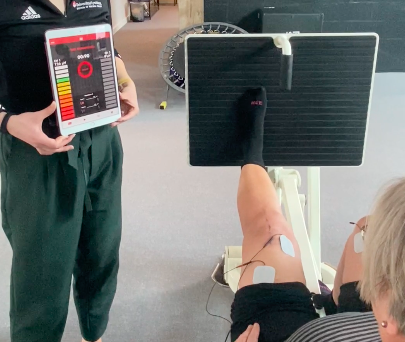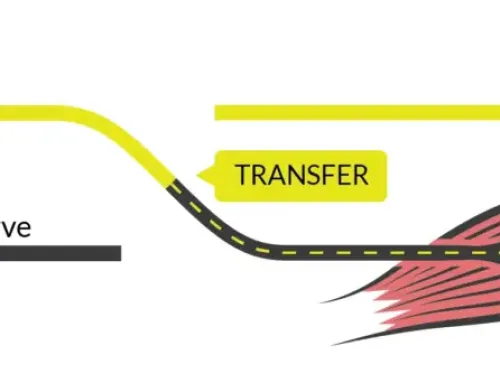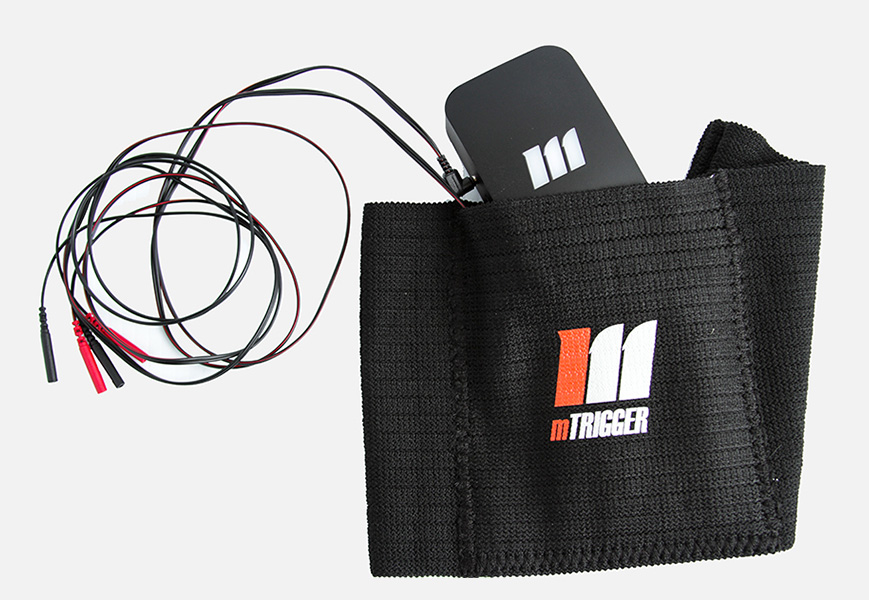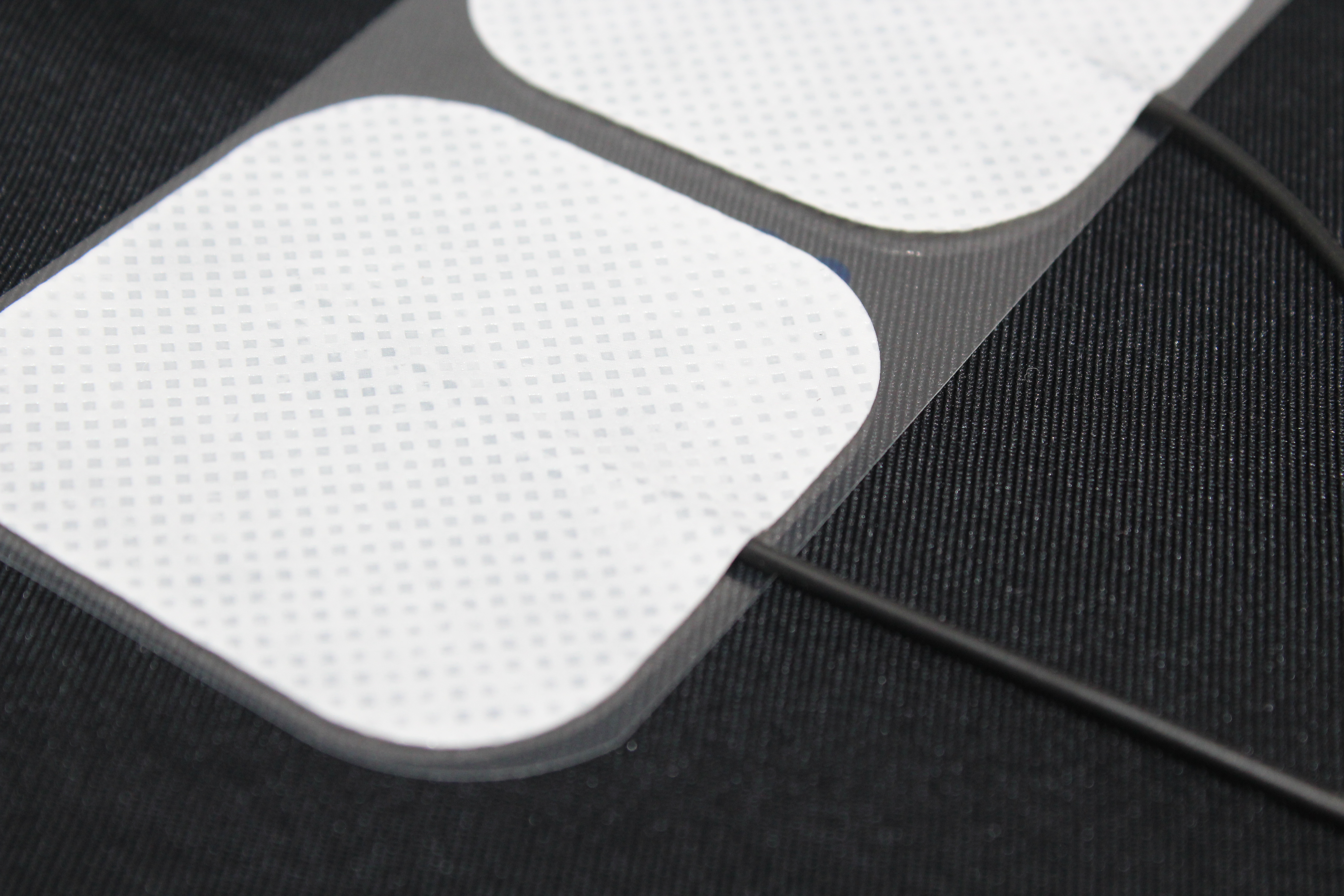As we get older (beginning at 60 years), there is a linear decline in muscle mass, muscle strength, and the rate at which our muscles can produce force, and older adults struggle to control motor output more so than young adults.(1) Simply put, when older adults exercise, there is greater variability in the muscle output, making it more challenging to control muscle force during a task.(2) This is a result of degenerative changes within the muscle and motor neurons that control those muscles.(1) Studies from Christou demonstrate that in both isometric and sustained contractions, muscle output and force have higher variability in older adult populations compared to younger adults.(2) The more challenging the task, the greater the variability, thus the less accurate the desired joint movement tends to be.(2) Because of this variability, older adults struggle to learn new motor skills.(2) The ability to decrease variability in force output is essential in aging populations, as it will improve their performance and increase their ability to learn new tasks.(2)
Clinical Applications
Considering the above, we can see how sEMG biofeedback intervention would benefit older adults. Biofeedback will allow them to work on modulating motor output during progressively more challenging tasks while providing information on the success and variability of their performance. In order to train the fine tuning of movement necessary for life, it takes more than just simple strength training.
Strength training is effective at preventing muscle loss and atrophy, but strength training alone will not reduce the variability of contraction observed in older adults.(2) A focus must be placed on muscle coordination as well, and for this mTrigger is essential. See below how this patient learns to perform a scapular strengthening exercise with improved muscle coordination and control:
Furthermore, strength deficits and asymmetries often follow joint replacement surgery (a procedure that is common in those 65+).(3) If these strength deficits and asymmetries are not addressed, there is an increased load on the non-operative knee/hip that can cause subsequent problems.(3,4) In fact, asymmetries after surgery lead to even greater deficits in overall function compared to those without asymmetries.(3,4) When visual biofeedback is used to address these deficits, an improvement in symmetry between limbs is observed.(3,4) All the more reason to use mTrigger biofeedback as a tool for improving weight shifting asymmetries in older adults! See below on how to use mTrigger visual biofeedback to improve symmetry during a squatting exercise:
Another common issue after knee replacement surgery is a lack of terminal knee extension; a lack of terminal knee extension can lead to even greater asymmetries when walking before or after surgery. (3,4) Think about it this way: if you never get the knee fully extended (straight) after surgery, you end up walk around on one “shorter” leg.
When using biofeedback in older adults, studies have shown it helps to provide additional information regarding body function and position so that you can develop changes in behavior to improve and enhance performance.(5) Visual biofeedback like mTrigger provides active practice for controlling and improving body motions.(5) The real-time visual biofeedback mTrigger provides allows for frequent and accurate updating of muscle activation levels.(6) When an older adult can visualize the fluctuations in muscle contractions, they are able to better take that information and make visuomotor corrections to control muscle activity.(6,7)
Summary
mTrigger visual biofeedback is an excellent tool for anyone trying to increase muscle activation, timing, and performance during an exercise. For older adults experiencing a decline in muscle mass, force output accuracy, and muscle activation levels as a result of aging, it is especially critical. mTrigger can be a game changing tool when it comes to improving muscle activation levels and decreasing asymmetries after joint replacement surgery. Try using it to fine tune muscle activation levels, increase precision of exercise, performance, and ultimately improve coordination of tasks in your older adult population!
More on Why Biofeedback Work
|
Unsure if Biofeedback is the Right Tool?
|
References
1. Hu X, Newell KM. Aging, visual information, and adaptation to task asymmetry in bimanual force coordination. J Appl Physiol. 2011;111(6):1671-1680. doi:10.1152/JAPPLPHYSIOL.00760.2011
2. Christou EA. Aging and variability of voluntary contractions. Exerc Sport Sci Rev. 2011;39(2):77-84. doi:10.1097/JES.0B013E31820B85AB
3. Zeni J, Abujaber S, Flowers P, Pozzi F, Snyder-Mackler L. Biofeedback to promote movement symmetry after total knee arthroplasty: A feasibility study. J Orthop Sports Phys Ther. 2013;43(10):715-726. doi:10.2519/JOSPT.2013.4657
4. Abujaber S, Pozzi F, Zeni J. Influence of weight bearing visual feedback on movement symmetry during sit to stand task. Clin Biomech (Bristol, Avon). 2017;47:110-116. doi:10.1016/J.CLINBIOMECH.2017.06.005
5. Alhasan H, Hood V, Mainwaring F. The effect of visual biofeedback on balance in elderly population: a systematic review. Clin Interv Aging. 2017;12:487. doi:10.2147/CIA.S127023
6. Watanabe T, Nojima I, Mima T, Sugiura H, Kirimoto H. Magnification of visual feedback modulates corticomuscular and intermuscular coherences differently in young and elderly adults. Neuroimage. 2020;220:117089. doi:10.1016/J.NEUROIMAGE.2020.117089
7. Kwon M, Christou EA. Visual information processing in older adults: reaction time and motor unit pool modulation. J Neurophysiol. 2018;120(5):2630-2639. doi:10.1152/JN.00161.2018









Leave A Comment